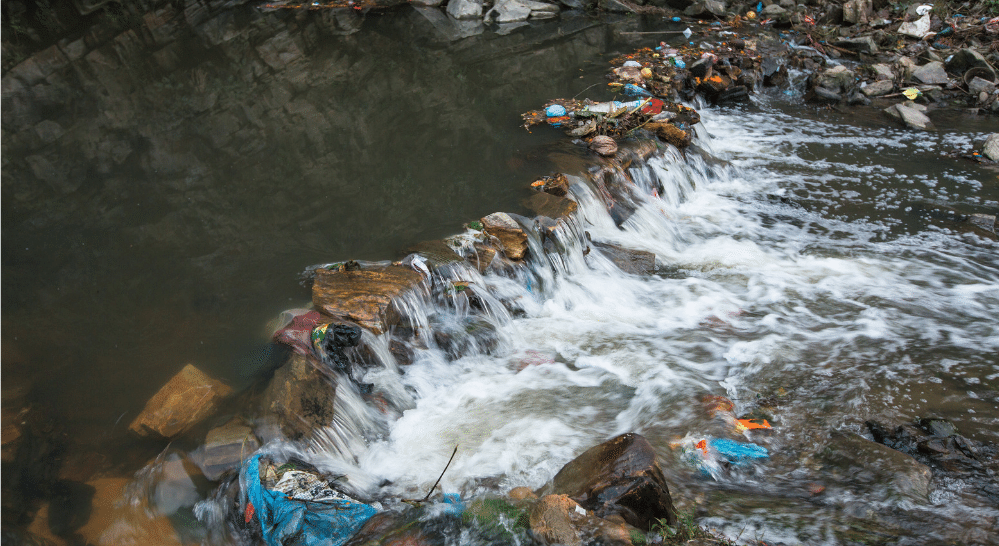The Dangers of Synthetic Clothing and Artificial Dyes to You and the Environment
The fashion industry is the 2nd largest polluting industry in the world, first being the oil industry. Fast fashion has been dominating and reshaping the fashion industry since the 1990s which have led to enormous greenhouse gas emissions and impacted the environment severely.

"The fashion industry has a disastrous impact on the environment. In fact, it is the second largest polluter in the world, just after the oil industry. And the environmental damage is increasing as the industry grows." (Source)
The Rise of Synthetic Fabrics and Man-made Dyes
Fast fashion may have started gaining momentum since the 1990s but they have existed as early as the 1800s.
During the beginning of the 20th century, clothing production was still done in small workshops and in homes. It was after World War II that production of clothing has become standardized. Consumers have since become more repetitive on purchasing mass-produced clothing rather than homemade clothing.
Why Is the Fashion Industry Producing Fast Fashion Clothing?
Fashion industries chose fast fashion for the mass production of clothing because synthetic fibers are cheap and can be produced in large quantities as compared to natural fibers. With increasing demands, large fabric manufacturing companies emerged. Artificial dyes were added to fabrics to prevent them from shrinking and wrinkling.
 The textile industry produces 80 billion of clothes each year which contributes to the fashion industry being the 2nd most polluting industries in the world.
The textile industry produces 80 billion of clothes each year which contributes to the fashion industry being the 2nd most polluting industries in the world.
What Are the Dangers of Synthetic Clothing and Man-made Dyes?
Synthetic fibers affect both health and the environment.
The health risks affect consumers and factory workers as well. Whereas the environmental risks of fast fashion are air pollution, water pollution, and soil pollution.
Health risks:
The fabrics made out of polyester, acrylic, rayon, nylon, spandex, and acetate contain a great source of toxins that affect your health and the environment.
The toxins used in these fibers are not completely removed during the manufacturing process, and find easy entry access to your body through your skin. Acrylic, a clothing material manufactured by the combination of toxic substances is a major cause of breast cancer in women.
 The toxins used in clothes can cause rashes, itching, skin cancer, and hormonal dysfunction.
The toxins used in clothes can cause rashes, itching, skin cancer, and hormonal dysfunction.
Environmental risks:
The production of synthetic clothing and artificial dyes by fashion industries causes air pollution, water pollution, and soil pollution.
Air pollution - textile industries emit glycol ethers, detergent, combustion gases, and reactive components during the production of synthetic clothes. These gases can cause acid rain and destroy the ozone layer on a large scale.
Water pollution - water pollution caused by fashion industries are in the form of acidic and corrosive substances like lubricants, salts, and detergents. These substances are dumped to large bodies of water like rivers, lakes, and oceans.
 The fashion industries in most countries dump untreated toxic substances directly into lakes and rivers.
The fashion industries in most countries dump untreated toxic substances directly into lakes and rivers.
"Cotton needs a lot of water to grow (and heat), but is usually cultivated in warm and dry areas. Up to 20,000 liters of water are needed to produce just 1kg of cotton." (Source)
Soil pollution - the fashion industry produces both toxic and non-toxic waste products. Non-toxic waste products include discarded fabrics, packaging, machine parts, etc. They are non-biodegradable and takes a long time to decompose thus creating long term pollution. Toxic waste dumped into the soil can kill the plant lifelike flowers and trees.
"The fashion industry plays a major part in degrading soil in different ways: overgrazing of pastures through cashmere goats and sheep raised for their wool; degradation of the soil due to a massive use of chemicals to grow cotton; deforestation caused by wood-based fibers like rayon."(Source)
3 Reasons Why Fast Fashion Industries Need to Slow Down
- Environmentally disastrous - as seen earlier, fast fashion creates air pollution, water pollution, and soil pollution.
- Can harm your health - toxic chemicals in your clothes linger. Chemicals like volatile organic compounds (VOCs), p-Phenylenediamine (PPD) have shown to cause serious health effects which can lead to skin cancer.
- Fast fashion reflects your moral value - with a majority of people now aware of the effects fast fashion, clothing companies, and consumers are now slowing moving towards a slow fashion approach. Showing up in school, work, or going out with synthetic clothing will reflect your sense of moral value to everyone around you.
What's the Answer to Curb Fast Fashion?
Slow fashion is the answer to fast fashion. Eri silk and natural dyes constitute slow fashion.
The longevity of Eri silk alone is a major factor in why sustainable fashion is the answer to fast fashion. Clothes made out of Eri silk can last as long as 50 years.
The purity of natural dyes is another contributing factor in why sustainable fashion is the way fashion industries should start looking at. Natural dyes are not only safe to your body but do not harm the environment in any way.


 The textile industry produces 80 billion of clothes each year which contributes to the fashion industry being the 2nd most polluting industries in the world.
The textile industry produces 80 billion of clothes each year which contributes to the fashion industry being the 2nd most polluting industries in the world. The toxins used in clothes can cause rashes, itching, skin cancer, and hormonal dysfunction.
The toxins used in clothes can cause rashes, itching, skin cancer, and hormonal dysfunction.  The fashion industries in most countries dump untreated toxic substances directly into lakes and rivers.
The fashion industries in most countries dump untreated toxic substances directly into lakes and rivers.
Leave a comment